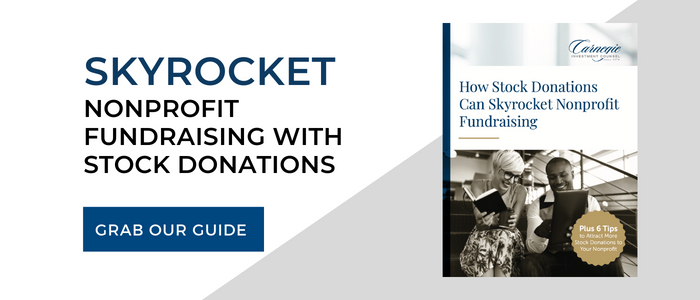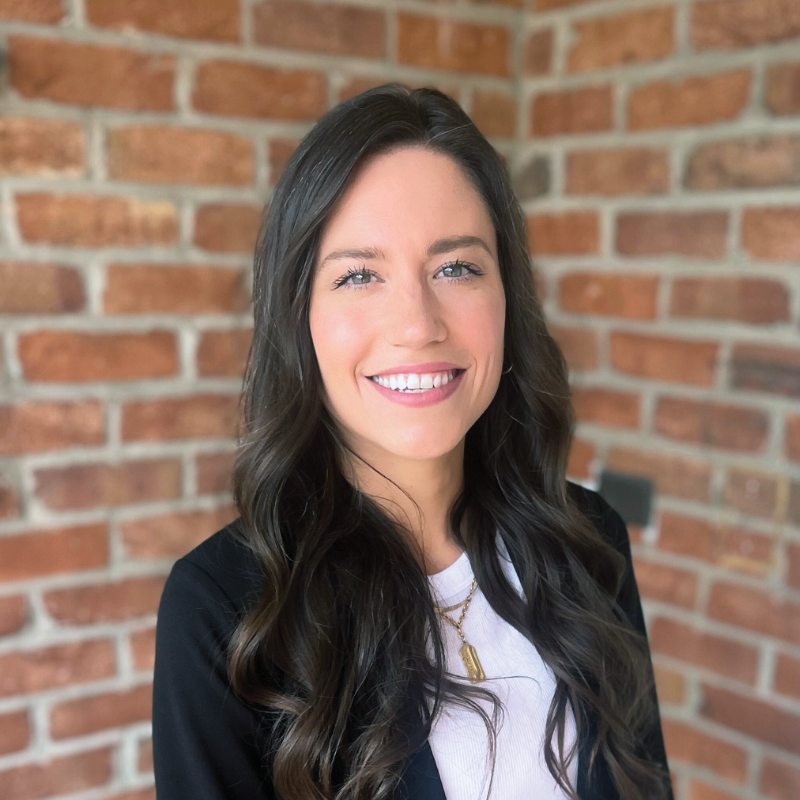
In our last post, we discussed what the great wealth transfer is and why your nonprofit should start preparing now. Here are five ways to prepare for the great wealth transfer so you can maximize your potential donations.
1. Arm Your Network So They Can Provide Referrals
Some people want to give through their estate, but they don’t know how. Many are uncomfortable bringing it up and, therefore, never take action. It’s important for people involved in the estate process to be educated on how their clients can support their favorite charities.
For instance, sometimes people would prefer to direct donations to a charity instead of collecting flowers at a funeral. Sometimes, the family doesn’t have a chosen charity in mind and having one more decision to make during their grief is tiresome. Having your information readily available for the funeral home to recommend could help them as much as it helps your organization.
Create relationships with financial advisors, attorneys, insurance companies and funeral homes in your local area. Start by asking them about their practice and what types of clients they serve, so you can know who to send their way. Learn whether or not they ask their clients about charitable giving and if you can help them in any way. Ensure they know all the ways donors can support you and provide materials for them to have on hand. This is a long game that pays off exponentially.
2. Educate Your Current Donor Base on Planned Giving
It can feel weird to discuss the end of life, but it is important for both your nonprofit and your donors. And the fact is, most people know they need to make these plans. According to the Wall Street Journal, the percentage of 18- to 34-year-olds with wills jumped from 16.4 percent in 2020 to 27 percent in 2021, and this percentage is expected to grow. Millennials cited the pandemic as their reason for wanting to get their affairs in order.
Educate yourself on will-making tools like FreeWill that allow users to create a free legal will or estate plan and also encourage people to support nonprofits. Users can easily input the amount they want to give and choose the charity of their choice while creating their will. When creating a will, users can manually add their chosen organization’s information or choose from the list of FreeWill’s partners.
Even if your donors have a will, they may not have considered including your organization as a beneficiary. Continue to talk about it and remind people about their options. Educate donors on how important it is, and don’t be afraid to add urgency. The organization 2nd Chance 4 Pets does a great job of this. Their website states:
If you find it hard to think about life without your pet, imagine your pet’s life without you.
Use automation and your current communications to highlight your planned giving program and educate throughout their donor journey. Here are a few suggested touchpoints:
- Have a planned giving landing page on your website.
- Share a story about a planned gift and the impact it made in your donor welcome series.
- Highlight a past legacy donor at your next fundraising event.
- Develop a legacy giving society (According to Philanthropy Daily, nonprofits that have a donor club and consider it an important part of their fundraising efforts have an average per-donor contribution level 49.6 percent higher than those that don’t.)
- Add information about planned giving to your donation remit envelope.
- Educate donors during January by encouraging them to make creating a will a new year’s resolution.
- Run a small, targeted campaign during August, which is Make a Will Month.
- Promote awareness about National Estate Planning Awareness Week in October.
- Mention planned giving when reviewing your Form 990 with potential major donors.
The Rule of Seven refers to the fact that modern brains need to interact with something seven times before it will take action. And remember that every donor isn’t seeing every piece of information you put out. Don’t be shy about spreading the word!
Bonus Tip: When talking about planned giving, encourage donating a percentage of the estate instead of a set amount: You’ll most often get a higher donation.
3. Engage With the Younger Generations
Younger generations are great supporters of philanthropy. But if nonprofits only use the old ways of solicitation and communicating, they will lose the attention of these younger donors and thus their support.
Begin developing relationships with them now, so you become part of their life. Spend time educating them and interacting so you can nurture their love for your mission. Use these experiences to gather feedback so you can learn how to better connect with this demographic. How can they best help move your mission forward? Make sure you are showing up where they are: the events they go to, the social media platforms they are on and the causes they care about.
For now, focus on growing your monthly giving program with these donors, who are more likely to give on a consistent basis. Continue to nurture their love for your mission and strengthen their bond with your organization. Once these donors have inherited a large lump sum and want to give, you will be at the top of their minds.
4. Encourage Baby Boomers to Include Their Families
The baby boomer generation is a proud and hard-working generation. They believe strongly in legacy and community. Invite your donors to get their families involved. This could involve volunteering, attending fundraisers, touring the facility, hosting collections or attending recognition events.
Hint: the way to a grandma’s heart is through her grandchildren. This is a great opportunity to begin nurturing a relationship with a Gen Z donor who can help your organization succeed for years to come.
“What’s needed for nonprofits is nothing less than a paradigm shift. We need to start connecting with families, not just individuals. We need to articulate a resonant mission, not just relying on tradition, legacy or old-school ties. And we need to learn how to steward donors of all kinds,” says Gary Laermer, Pace University’s vice president for development.
Focus on the donor’s wider circle, not just the individual. People normally love talking about their family, so ask a few questions about their kids, pets or partner. Invite them into the conversation and share your mission with them. They may become your favorite donor yet.
5. Offer Non-cash Donation Options
As this transfer continues, wealth will be stored and given differently. According to Fortune, millennials and Gen Z are growing at a high rate in the investing game. Donors need to know there are multiple ways to support your mission, other than just cash. Donating stocks, crypto, life insurance policies, qualified charitable distributions, etc. all offer unique benefits for donors.
Don’t forget about retirement accounts and other non-probate assets. These accounts will always be taxed, even for donors under the estate planning threshold. However, the holder can choose to make a donation directly out of the account and that money would not be taxed, while also reducing their taxable income.
Having a smooth and easy process for making major gifts is critical. You want to offer ease and accessibility for donors to support your mission however and whenever they want to. But it can be confusing to facilitate a transfer of that scale. Including your nonprofit financial advisor in creating this process can ease this burden. If you don’t have a financial advisor yet, contact Carnegie Investment Counsel to learn how we can help your organization.
Bonus Tip: Don’t Judge a Book by Its Cover
Remember not to judge somebody based on appearances. Yes, you can target your communications based on criteria and past behaviors. However, when a donor lands on your door, you better treat them well. Treat each of your donors like the heroes they are!
Many boomers grew up with depression-aged parents and had a frugal mindset, not spending on luxury or name-brand items. They may not appear to be, but they could be sitting on lots of money in the bank.
“We once had an older gentleman show up in ripped barn clothes. Our CEO took the time to meet and talk to him. He told us he just came from another organization and had a terrible experience. He told the receptionist he wanted to make a donation, but proceeded to sit in the waiting room for over an hour and a half. He was never apologized to or provided an explanation. Even though he loved that organization, he left and drove straight to our doors. After a few minutes of conversation, he donated over $52,000 in stocks to our organization,” said Megan Lencoski, former chief operating officer of WomenSafe Inc., a nonprofit domestic violence shelter.
Be Ready to Prepare for the Great Wealth Transfer
Are you prepared for major gifts from all generations: such as an endowment, gift of stock, crypto donation or qualified charitable distribution? Talk with your financial advisor to ensure everything is in place to facilitate an easy and smooth transfer of funds. If you don’t have a financial advisor, contact Carnegie Investment Counsel to learn how we can help your organization.
Looking for a Financial Advisor for Your Nonprofit?
Contact us if you are currently looking for a second opinion or help with investment management. We are happy to schedule an introductory meeting at your convenience.



